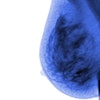SEATTLE - For radiologists looking to improve on their stereotactic breast biopsy skills, 15 and 20 could be the magic numbers, according to investigators from Memorial Sloan-Kettering Cancer Center in New York City.
Led by Dr. Laura Liberman, the group assessed the learning curve for stereotactic breast biopsy. Catherine Benton, a second-year medical student who worked on the study with Liberman’s group, presented the results at the American Roentgen Ray Society meeting on Tuesday.
The question the group wanted to answer was "How many cases are enough to learn stereotactic biopsy?"
"Although stereotactic breast biopsy has been used for some time now, there is little data that has addressed the learning curve," Benton said.
One of the conclusions that the investigators arrived at was that, for 14-gauge automated core biopsy, a radiologist's technical success rate showed improvement after 20 cases; for 11-gauge vacuum-assisted biopsy, the success rate climbed after 15 cases.
The Sloan-Kettering researchers conducted a retrospective analysis of 923 consecutive lesions that underwent stereotactic biopsy. Six radiologists performed the procedures. At the outset of the study, three had a median of seven years breast imaging experience; one had four years as an interventional radiologist; one had completed a fellowship in breast and body imaging; and one had completed residency training.
All but one of these radiologists had no prior clinical experience with stereotactic biopsy. The median number of stereotactic biopsy procedures performed per radiologist during the study was 180.
From August 1992 to June 1998, 414 lesions were excised with patients lying prone on a dedicated biopsy table using digital spot mammography (Lorad, Danbury, CT) and a 14-gauge automated needle. An 11-gauge directional vacuum-assisted biopsy device was used in 346 lesions, and a 14-gauge directional vacuum-assisted biopsy device was used in 163 cases.
From August 1992 to December 1995, 414 stereotactic biopsies were performed using a 14-gauge automated needle; in 404 cases, a long excursion gun was used, and a short excursion gun was employed in the remaining 10 lesions.
From December 1995 to October 1996, a 14-gauge directional vacuum-assisted biopsy probe was used in 139 procedures. Finally, from October 1996 to June 1998, either an 11-gauge or a 14-gauge directional vacuum-assisted biopsy probe was used, depending on the preference of the radiologist.
"For the purposes of our study, we defined technical success differently for calcifications than for masses," Benton said. The definition for the technical success of retrieving calcifications was stated as documenting them with specimen radiography. For masses, technical success was based on obtaining a histologic diagnosis that agreed with the imaging features.
The outcomes were then measured as a function of biopsy method, and the results were as follows:
- 14-gauge automated: 89% technical success rate for calcifications, 97% for masses, 94% for all lesions.
- 14-gauge vacuum assisted: 93% technical success rate for calcifications, 98% for masses, 94% for all lesions.
- 11-gauge vacuum-assisted: 96% technical success rate for calcifications, 94% for masses, 95% for all lesions.
Benton said that the analysis revealed that there was a steeper learning curve for calcifications than for masses: each radiologist worked 15 cases before achieving a 96% technical success rate for the former, and 94% for the latter. There also was a higher calcification retrieval rate with 11-gauge directional vacuum-assisted biopsy than with 14-gauge automated core biopsy.
One session attendee asked under what circumstances the doctors failed to achieve technical success for retrieving calcifications. In most instances, the radiologist was not able to obtain samples even after multiple attempts, Benton said.
Benton also was asked about the kind of training program that the radiologists underwent. Each participant did at least one half-hour training session with a phantom; subsequent training was done under the supervision of a radiologist experienced in stereotactic breast biopsy, Benton said.
One of the implications of the study is that it’s better for a small number of experienced individuals to perform stereotactic biopsy, the study concluded. In addition, during the early cases, close supervision is essential.
Future research at Sloan-Kettering will focus on the number of cases required to maintain proficiency in this technique and to assess the learning curve for new biopsy technology, Benton said.
By Shalmali Pal
AuntMinnie.com staff writer
May 2, 2001
Click here to post your comments about this story. Please include the headline of the article in your message.
Copyright © 2001 AuntMinnie.com



















